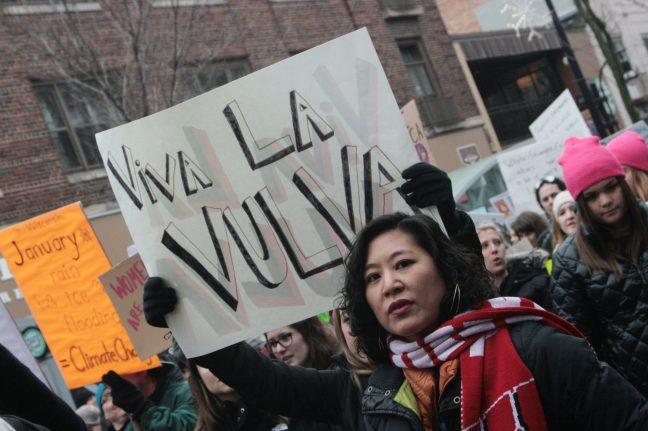Editor’s note: This is part two of a three-part series, detailing the author’s experience at the Women’s March in Washington, D.C. Jan. 21.
On the morning of the march, our group, now six members strong, emerged from my cousin’s quaint studio apartment near Columbia Heights. We were feeling both excited and curious.
We knew the experience before us would be something to behold, but we had no idea what form it would take. We had read estimates, some speculating 250,000, others 500,000 and some even 1 million. What would 1 million people even look like?
I’ve been to sporting events and parades, so it’s not that I haven’t seen thousands of people grouped together before, all for one unifying reason. But at those events, people were neatly organized by seating arrangement, each there to pass some time at a fun event. What, then, would a far greater group of people look like, united not by loyalty to a team but by a shared outrage and desperate need for community?
Filling up on coffee and pastries, people seeking a common path to the same place — the Capitol Mall — joined us en route to the subway. While walking there, we felt our number and presence growing in size. As we entered the tube, though, we got the first real taste of what the march really was.
On the train platform there was neither room on the platform or the trains. We watched two trains go by before we had the chance to board one. Losing patience, but never enthusiasm, our posse politely nudged our way onto a train hosting the largest group hug I’d ever been a part of.
My cousin Margaret, a recipient of a master’s degree in urban planning from Harvard University, quipped this might be the only packed subway train in the world where not a single person is in danger of sexual assault. It sparked the laughter of our surrounding train mates but was an important reminder of why we were there, as well as a reminder to me of my own privilege as a male — a white male, at that.
Having established my identified gender, and accompanying privilege, it’s worth noting how I chose to dress for the march. My clothes were normal — light blue jeans and a pink t-shirt reading “All Men Are Sexist” from Insert Apparel. The only difference in how I’d dress on an average day was my cherry red lipstick, courtesy of my friend Katherine, a first-year student at the University of Kentucky.
At first I decided to wear it as a sign of solidarity, as well as a symbol of a rejection of the toxicity that comes with masculinity. It wasn’t until I stepped outside, though, that I became more conscious of my body than ever before. I felt like everywhere I went there were eyes on me. Many felt friendly, some curious and few judgmental, but eyes nonetheless. I realized that for me, those exceptional few hours were a simulation of the daily lives of women, and many marginalized groups, in many spaces.
The most telling moment was when we were approaching the Washington Monument and one dude, donning sunglasses and a Patagonia jacket, smirked at me and said, “Alright,” as if to say he granted my appearance approval, and with that, approval of my existence in its current form.
This isn’t to say that with this slight taste, I now know the burden of being a marginalized person, constantly judged and watched, however bitter it was. Rather, I realize the weight an act as simple as staring can impress upon another human being. I’m positive at other points in my life, I have been that guy, making another human being all too conscious of their place in our shared space.
Every stone, no matter the size, creates a ripple. Every action is political, no matter the size.


